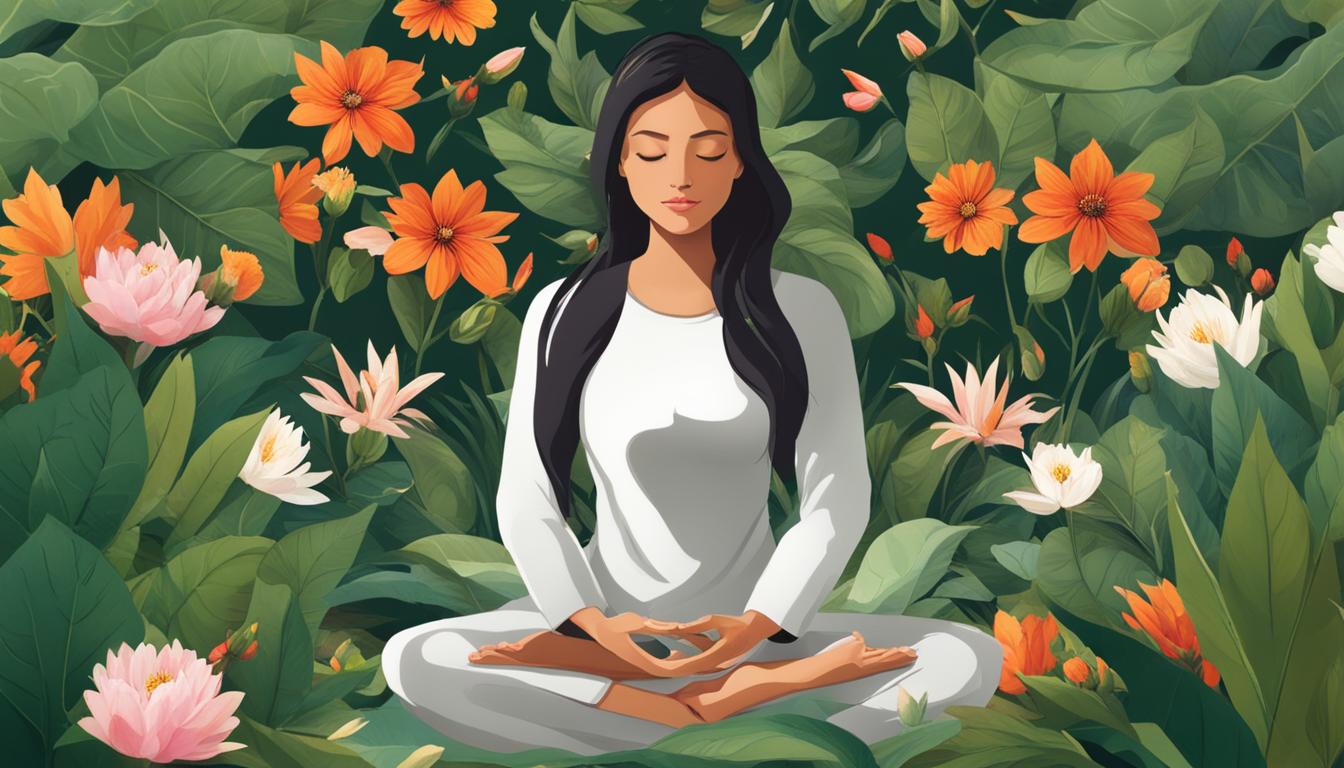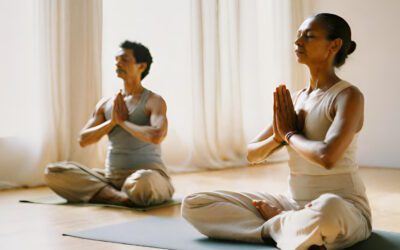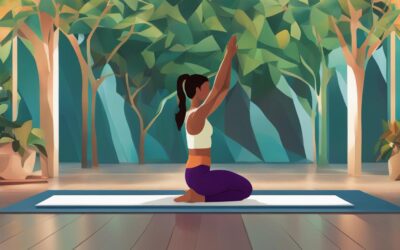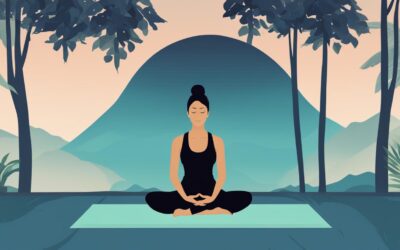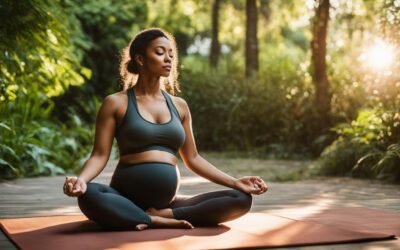As our lives become increasingly hectic, it’s important to find ways to keep both our minds and bodies fit. Yoga is a practice that not only has physical benefits but also positively impacts our mental well-being. Derived from the Sanskrit word Yuj, meaning “to yoke or bind,” yoga is often described as a union of the mind and body. In addition to physical fitness and mental calmness, yoga offers a range of benefits, including specific practices for managing various health conditions.
To get started with yoga, there are some basic equipment and props that beginners may find helpful, such as a non-slip yoga mat, comfortable yoga pants, and a supportive sports bra. Additional props such as foam yoga blocks, yoga straps, and yoga blankets can be beneficial as practitioners progress in their practice.
Key Takeaways:
- Yoga is a practice that benefits both the body and mind.
- Yoga can help manage various health conditions.
- Basic equipment and props are useful for beginners.
- Non-slip yoga mats, comfortable clothes, and supportive sports bras are recommended.
- Props like yoga blocks, straps, and blankets can aid in the practice.
Easy Yoga Poses for Beginners
Before diving into specific yoga poses, it’s important for beginners to warm up their bodies. Some simple warm-up exercises include neck rotations, shoulder warm-ups, ankle rotations, hip circles, and ankle rotations. Once warmed up, beginners can start practicing beginner-friendly yoga poses.
Balasana (Child’s Pose) is a comforting posture that stretches the hips, thighs, and ankles while promoting relaxation and stress relief,” says yoga instructor Sarah Thompson. “Bhujangasana (Cobra Pose) strengthens the back muscles and opens the chest, improving posture and flexibility. It also helps relieve stress and fatigue.”
Another beneficial pose is Setubandhasana (Bridge Pose), which helps stretch the spine, open the chest, and strengthen the legs and glutes. Tadasana (Mountain Pose) is a foundational pose that improves posture, balance, and body awareness. Tiryaka Tadasana (Swaying Palm Tree Pose) is a gentle side stretch that increases spinal flexibility. Uttanasana (Standing Forward Bend) helps release tension in the hamstrings and lower back while calming the mind.
Beginner Yoga Routine:
- Balasana (Child’s Pose)
- Bhujangasana (Cobra Pose)
- Setubandhasana (Bridge Pose)
- Tadasana (Mountain Pose)
- Tiryaka Tadasana (Swaying Palm Tree Pose)
- Uttanasana (Standing Forward Bend)
Start with proper alignment and gradually increase the duration and intensity of the poses as you become more comfortable.
Paschimottasana (Seated forward fold) stretches the hamstrings, back, and shoulders, promoting relaxation and flexibility. Baddha Konasana (Butterfly Pose) opens the hips and stretches the inner thighs, promoting flexibility and improved blood circulation.
Remember to breathe deeply throughout each pose and listen to your body. If a pose feels uncomfortable or causes pain, modify it or skip it altogether. Consistency is key, so start with a short beginner yoga routine and gradually add more poses over time.
Different Types of Yoga for Beginners
When it comes to starting a yoga practice as a beginner, there are a wide variety of options available. Whether you prefer the convenience of practicing at home, the guidance of a beginner yoga class, or the flexibility of online yoga classes, there’s a style of yoga that suits your needs. Here are some popular types of yoga for beginners:
Hatha Yoga:
Hatha yoga is a great choice for beginners as it focuses on balance, flexibility, strength, and concentration. It involves holding poses and controlled breathing techniques to promote physical and mental well-being. Hatha yoga classes often move at a slow and gentle pace, allowing beginners to learn proper alignment and build a strong foundation.
Vinyasa Yoga:
Vinyasa yoga, also known as flow yoga, is a dynamic practice that synchronizes movement with breath. It offers a great introduction to yoga for beginners by providing a combination of strength, flexibility, and cardiovascular exercise. Vinyasa classes typically include a series of flowing poses that aim to create a smooth and continuous movement.
Restorative Yoga:
Restorative yoga is a gentle and relaxing practice that focuses on deep relaxation and stress relief. It uses props like blankets, bolsters, and blocks to support the body in various poses for an extended period of time. This allows beginners to experience the benefits of yoga without exerting too much physical effort.
Kundalini Yoga:
Kundalini yoga combines movement, meditation, and chanting to tap into consciousness and promote mindfulness. It is a spiritual practice that aims to awaken the energy at the base of the spine. Kundalini yoga can be a transformative experience for beginners as it offers a holistic approach to physical and mental well-being.
No matter which type of yoga you choose as a beginner, it’s important to listen to your body, start slowly, and gradually increase the intensity of your practice. Remember, yoga is not about perfection, but rather about the journey of self-discovery and self-care. So, find the style of yoga that resonates with you and embark on your yoga journey with an open mind and a willingness to explore.
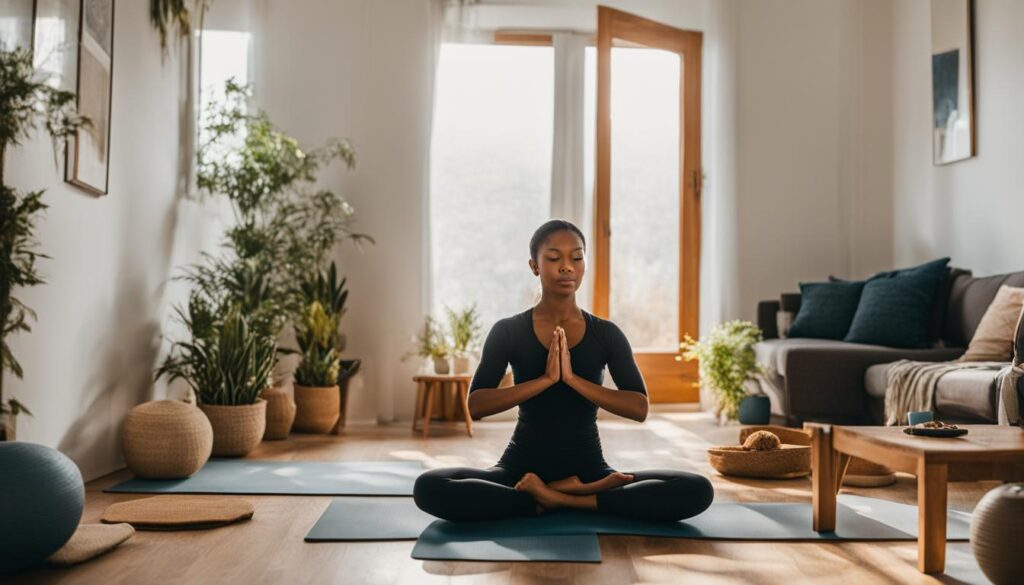
Final Thoughts
Yoga for beginners is a versatile and transformative practice that offers a multitude of benefits for both the body and mind. By incorporating yoga into your routine, you can improve your physical fitness, enhance mental well-being, and foster a deeper connection with your body.
Whether you choose to practice yoga at home, join a beginner-friendly yoga class, or follow online videos, there are countless options available to start your yoga journey. It’s essential to equip yourself with basic yoga equipment, such as a non-slip yoga mat, comfortable attire, and props like foam yoga blocks or straps that can aid in your practice as you progress.
To begin your yoga journey, it’s crucial to warm up your body with simple exercises before trying beginner-friendly yoga poses. Start with poses like Balasana (Child’s Pose), Bhujangasana (Cobra Pose), and Tadasana (Mountain Pose) to experience relaxation, increased flexibility, and strength building. Remember to focus on proper alignment and gradually increase the intensity and duration of your poses as you become more comfortable.
Unlock your zen and embrace the incredible benefits of yoga for beginners. Find a style that resonates with you, whether it’s the high-energy Hot Power Yoga, the restorative Yin Yoga, or the dynamic flow of Vinyasa Yoga. With dedication and patience, anyone can embark on a yoga journey, cultivate mindfulness, and experience the transformative power of this ancient practice.
FAQ
What is yoga?
Yoga is a practice that combines physical movements, breathwork, and meditation to achieve physical fitness and mental well-being.
What equipment do I need to start practicing yoga?
As a beginner, it’s helpful to have a non-slip yoga mat, comfortable yoga pants, and a supportive sports bra. Additional props such as yoga blocks, straps, and blankets can also be beneficial as you progress.
What are some warm-up exercises I can do before starting yoga?
Simple warm-up exercises include neck rotations, shoulder warm-ups, ankle rotations, hip circles, and ankle rotations.
What are some beginner-friendly yoga poses?
Beginner-friendly yoga poses include Balasana (Child’s Pose), Bhujangasana (Cobra Pose), Setubandhasana (Bridge Pose), Tadasana (Mountain Pose), and more.
What are the different types of yoga suitable for beginners?
There are various types of yoga suitable for beginners, including Hot Power Yoga, Yin Yoga, Hatha Yoga, Restorative Yoga, Vinyasa Yoga, Iyengar Yoga, Kundalini Yoga, and Ashtanga Yoga.
What are the benefits of practicing yoga for beginners?
Yoga offers a range of benefits for beginners, including improved physical fitness, mental well-being, relaxation, improved flexibility, and strength building.
Can I practice yoga at home?
Yes, you can practice yoga at home by following online videos or using yoga apps.
Is it necessary to attend a beginner-friendly yoga class?
Attending a beginner-friendly yoga class can be helpful as it provides guidance from a qualified instructor and allows you to practice in a supportive environment.
